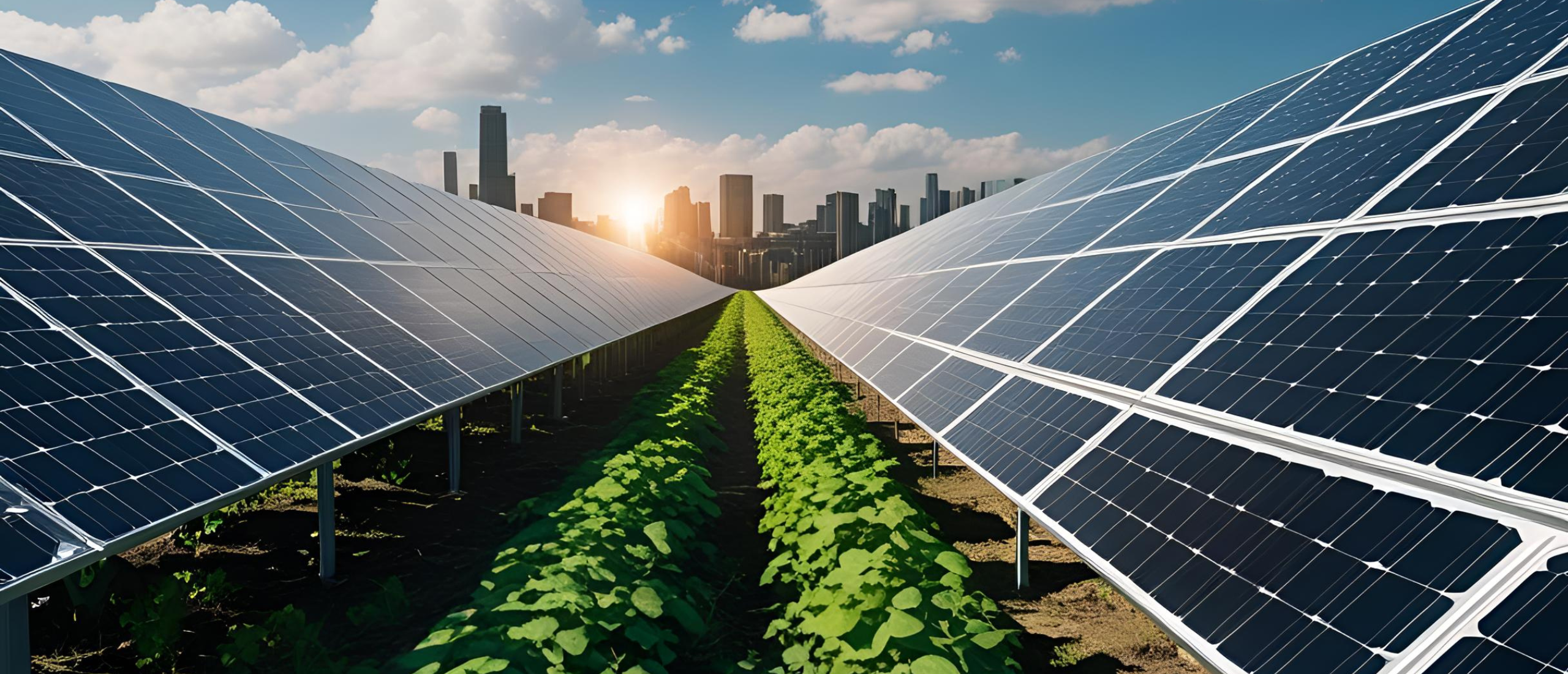
The True Carbon Cost of Solar: Decoding MG-Si to Module and the Rise of Carbon Transparency Standards
Solar photovoltaic (PV) technology offers significant solar energy advantages and is a cornerstone of the global energy transition—but its sustainability begins before the first watt is ever generated. To ensure that solar panels truly align with decarbonization goals, one must rigorously assess their cradle-to-gate carbon footprint of solar panels across the entire manufacturing chain—from metallurgical-grade silicon (MG-Si) to finished module.
The good news: a growing ecosystem of standards—anchored in ISO 14040—is enabling the market to measure and manage environmental impacts with increasing precision. In this article, Sinovoltaics examine the emissions hotspots in PV production and evaluate major carbon footprint and sustainability frameworks: U.S. EPEAT, French ECS, EU Product Declarations, EcoVadis PCF, Cradle-to-Cradle, and the emerging PINK strategy.
What is Life Cycle Assessment of solar panels(PV)?
Life Cycle Analysis is a quantitative method used to assess the environmental impacts associated with all stages of a product's life. For solar PV modules, this typically includes:
- Raw material extraction (e.g., quartz mining for silicon)
- Manufacturing (e.g., ingot, wafer, cell, and module production)
- Transportation (to installation sites)
- Installation and operation
- End-of-life (recycling, landfilling, or repurposing)
The primary environmental indicators assessed in LCA include carbon footprint (kg CO₂-eq/kWp). Typically the goal is to attain a carbon footprint of 500 kg CO₂-eq/kWp or lower.
The Carbon Footprint Across the Solar PV Supply Chain
According to ISO 14040—a globally accepted standard for conducting Life Cycle Assessments (LCA)—a product’s environmental footprint or ecological footprint must include all relevant inputs and outputs across its life cycle stages. In solar, the following stages are most critical:
1. Metallurgical Grade Silicon (MG-Si)
- Emission share: ~5–8%
- Quartz is converted to MG-Si using carbon-rich reductants in electric arc furnaces. This process releases CO₂ directly and is energy-intensive, though the electricity source (coal vs hydro) greatly affects impact.
2. Polysilicon Refining
- Emission share: ~35–45%
- The Siemens or FBR process purifies MG-Si into solar-grade polysilicon. This is often the single most carbon-intensive step, especially when powered by coal-fired electricity.
3. Wafer Manufacturing
- Emission share: ~15–20%
- Slicing polysilicon into wafers wastes ~30–40% as kerf. Advancements like diamond wire sawing, larger ingots, and kerf recycling help reduce emissions.
4. Cell Manufacturing
- Emission share: ~10–15%
- Steps like diffusion, passivation, and metallization consume process chemicals and electricity. High-efficiency architectures like TOPCon or HJT can reduce carbon per watt.
5. Module Assembly
- Emission share: ~10–15%
- Glass, aluminum frames, encapsulants, and junction boxes dominate. Glass-glass modules and thinner frames can improve recyclability and reduce embodied carbon.
Why ISO 14040 Matters
All credible carbon footprint methodologies are either built on or directly reference ISO 14040, which provides the foundation for consistent, reproducible, and verifiable LCAs. Its importance lies in:
- Systematic boundary setting (cradle-to-gate, gate-to-grave, etc.)
- Functional unit definition (e.g., per kWp or per module)
- Allocation of shared emissions (e.g., co-products)
- Data quality and uncertainty management
- Comparability between different modules, suppliers, or geographies
Adherence to ISO 14040 is non-negotiable in modern sustainability assessments—especially as solar enters regulated markets with mandatory carbon disclosure (e.g., EU CBAM, CRE tenders).
Carbon Accountability: Key Standards and Methodologies
To meet rising demand for transparency, multiple frameworks now guide how we measure, verify, and disclose carbon emissions in solar manufacturing.
As regulatory and procurement frameworks evolve, aligning low Levelized Cost of Energy (LCOE) with verified sustainability is key to maximizing the full value of solar energy advantages.
Here's a comparison of six prominent systems:
U.S. EPEAT for Solar PV
- Type: Sustainability ecolabel for government and institutional buyers
- Focus: LCA, PCF, circularity, labor & social metrics
- Highlights:
○ Requires ISO 14040/44 LCA and product-specific carbon data
○ Offers tiered levels (Bronze, Silver, Gold)
○ Promotes conflict mineral management and design for recyclability
French ECS (Énergie Carbone Solaire)
- Type: Mandatory carbon footprint score for PV in CRE tenders
- Focus: Cradle-to-grave GHG emissions (kg CO₂e/kWp)
- Highlights:
○ Based on EN 15804 and ISO 14040
○ Third-party verified LCA is required
○ Favours low-carbon production, particularly for polysilicon and aluminum
EU Product Environmental Product Declarations (EPDs)
- Type: Voluntary but standardized LCA disclosure format
- Focus: Multi-impact environmental assessment
- Highlights:
○ Based on EN 15804 and verified by third parties
○ Includes 10+ impact categories (not just CO₂)
○ Increasingly used in sustainable building and green procurement
EcoVadis Product Carbon Footprint (PCF)
- Type: Supplier engagement & carbon data exchange platform
- Focus: Scope 1–3 GHG emissions at the product level
- Highlights:
○ Enables suppliers to share verified PCF data with clients
○ Aligned with PACT, CBAM, and ISO 14067
○ Helps shift from generic emission factors to primary data
Cradle-to-Cradle (C2C) Certification
- Type: Holistic sustainability and circularity certification
- Focus: Material health, circular design, water stewardship, renewable energy
- Highlights:
○ Encourages recyclable and non-toxic materials
○ Tracks energy and water impacts during manufacturing
○ Recognized in architecture and green building markets
PINK Strategy
- Type: Strategic initiative integrating Procurement, Innovation, Net-Zero, and Knowledge-sharing
- Focus: Harmonized decarbonization across the value chain
- Highlights (speculative):
○ Encourages digital traceability (blockchain, QR tags)
○ Prioritizes gender equity and ESG co-benefits
○ May evolve into a harmonized platform combining LCA, PCF, and recyclability data
Navigating Methodologies: Which Should You Use?
Use Case | Best Methodology |
Winning CRE tenders in France and French overseas territories | ECS |
Selling into U.S. government or ESG markets | EPEAT |
Comprehensive environmental product declaration disclosure | EPD |
Supply chain emissions reduction | EcoVadis PCF |
Circularity and recyclability certification (Cradle-to-Cradle) | C2C |
Strategic decarbonization vision | PINK |
Conclusion
The future of solar is not just about how much energy it produces, but how cleanly it’s made. As PV projects enter the gigawatt-scale era, every percentage point of embodied carbon matters. Even more so the end of life management, which should not only focus on recycling but re-use and refurbishment.
Manufacturers, developers, and investors must now embrace a multi-metric approach to sustainability, one that combines carbon transparency, material circularity, and social responsibility. The good news? Tools like EPEAT rating, ECS, EPDs, EcoVadis PCF, and C2C are making it easier than ever to verify and differentiate based on environmental performance.
Sinovoltaics provides LCA calculations as part of their ESG audits of PV module manufacturers. Reach out to Sinovoltaics team to see how we can assist you in this endeavour if it is part of your reporting or tender requirements.
